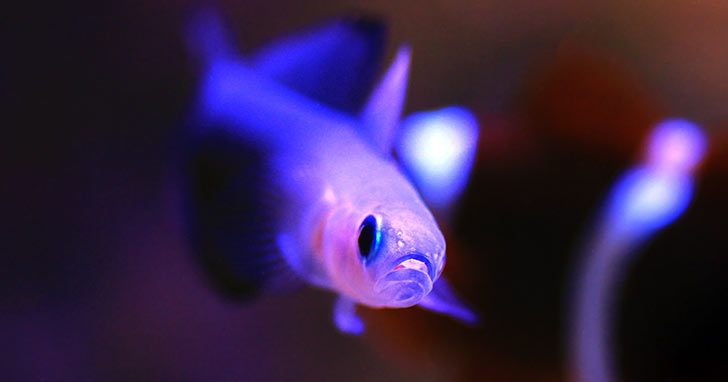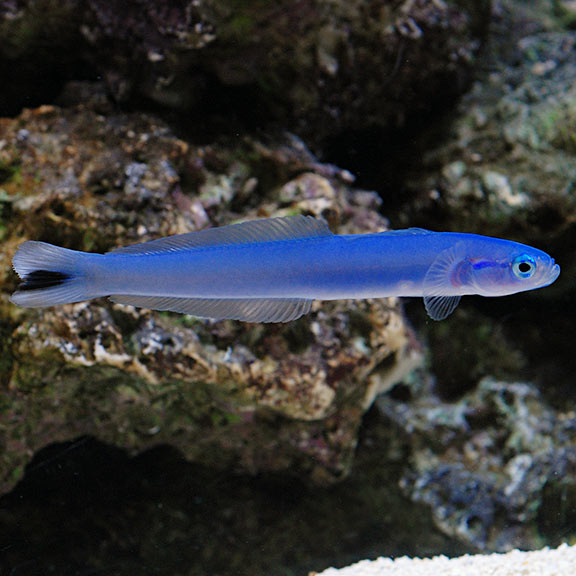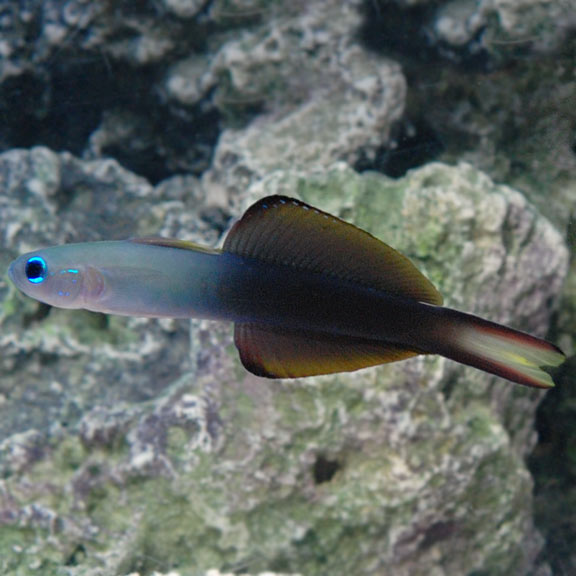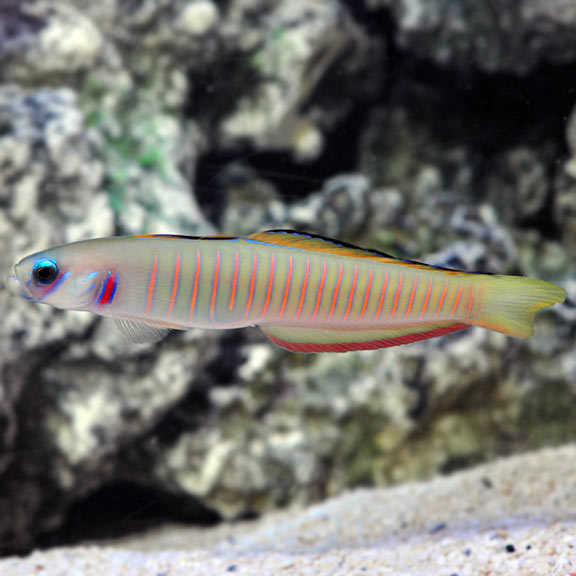
Dartfish: Hit the Bullseye with this Peaceful Saltwater FishAre Dartfish aggressive?
Dartfish are smaller marine aquarium fish with colorful and elongated bodies and extended fin rays. They have small heads, large eyes and protruding lower jaws and come in a large variety of colors, patterns, and shapes. Dartfish are hardy and great choices for those seeking peaceful options for saltwater, reef, or nano aquariums. Are dartfish reef safe?
In nature, Dartfish are at home in habitats with rocky or reef areas where they seek shelter within the rocks or corals. They are known to retreat at the first sign of trouble, darting in and out of their hiding places, and even burrow into sand substrates to do so. These are either burrows they build themselves, or ones built by other aquatic life (crustaceans, mollusks, fish). With an easy care level, both beginner aquarium hobbyists and saltwater aquarists can achieve success with them. In nature, Juveniles are likely to travel in groups, but in an aquarium they are kept singly or may pair up as adults. Dartfish, along with six other genus, comprise the family Ptereleotrinae. Originally placed in the Gobiidae family, they were moved to the Microdesmidae family, then eventually placed in their own family group of Pterelotridae. Because of this, research on the Dartfish could include classification in any of these three family groups. Tank requirements for Dartfish
To help replicate the environment found in nature, Dartfish require plenty of hiding places in rock or coral and at least two inches of a sandy substrate in which they can burrow. A lid on the aquarium is necessary, as they are easily startled and able to jump. With plenty of hiding places for all, it is best to house them with other small peaceful fish. Dither fish can provide them with some confidence to explore outside of their hiding places and can aid in acclimation. Although they themselves are peaceful, they may be eaten by some tankmates: Hermit crabs, Sea Stars, Pencil Urchins, and Stinging Anemones, to name a few. It is important to note that Dartfish are skittish. Aquarists must be aware of not only the environment inside the aquarium, but outside it as well. They can be stimulated by the outside environment so would not be good choices for saltwater aquariums in high traffic home areas, office settings, or classrooms where many children are present who may stress the Dartfish. How do Dartfish breed?
There is little known about Dartfish breeding habits other than they are egg layers who will spawn in protected areas, and even less is known on how they care for fry once they’re hatched. What do Dartfish eat?
Dartfish are carnivores and feed off plankton in nature but will accept zooplankton in an aquarium environment. Enriched brine shrimp can be used as a supplement and eventually marine flaked or frozen foods can be fed. Because they have very little fat reserves, it is important to get them eating as soon as possible during acclimation and to feed multiple times per day. Care should be taken when selecting tankmates so they will not be outcompeted for food. Best Dartfish for my tank
Let’s explore some of the popular Dartfish varieties offered by LiveAquaria®. 
Blue Gudgeon Dartfish Ptereleotris heteroptera The Blue Gudgeon Dartfish offered by LiveAquaria® originates from Fiji. It is commonly referred to as the Blacktail Goby or Blacktail Dartfish. It has a pale blue or green body with a prominent black spot on its tail and enjoys being housed in pairs. Feeding mostly on prey suspended in the water column, it will also pick food off the substrate. Its diet should include Mysis shrimp, brine shrimp, and frozen food preparations for carnivores and should be fed at least three times per day. 
Scissortail Dartfish Ptereleotris evides The Scissortail Dartfish is also known as the Scissortail Goby and has a white head and blue body with large dorsal and anal fins. Its diet should include chopped or shaved seafood, brine shrimp, and Mysis shrimp. 
Zebra Barred Dartfish Ptereleotris zebra The Zebra Barred Dartfish is known by many other names: the Zebra Dart Goby, Bar Goby, and Barred Dartfish, to name a few. Both the head and body are light green. Its attractive and slender body has numerous vertical, evenly spaced thin orange stripes that display an intricate pattern. The meaty diet of this Dartfish should include fresh or frozen seafood, brine shrimp and Mysis shrimp. Tips for keeping Dartfish happy
Dartfish have peaceful temperaments and an easy care level. In order to house them successfully, careful attention should be taken to reduce their stress. Meeting tank requirements, selecting compatible tankmates, and minimizing activity outside and around the aquarium will enable aquarists to provide them with as stress free an existence as possible. Related Articles
|
|
|


